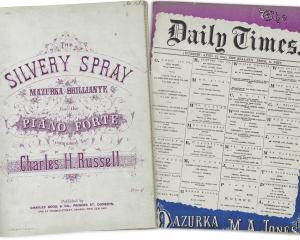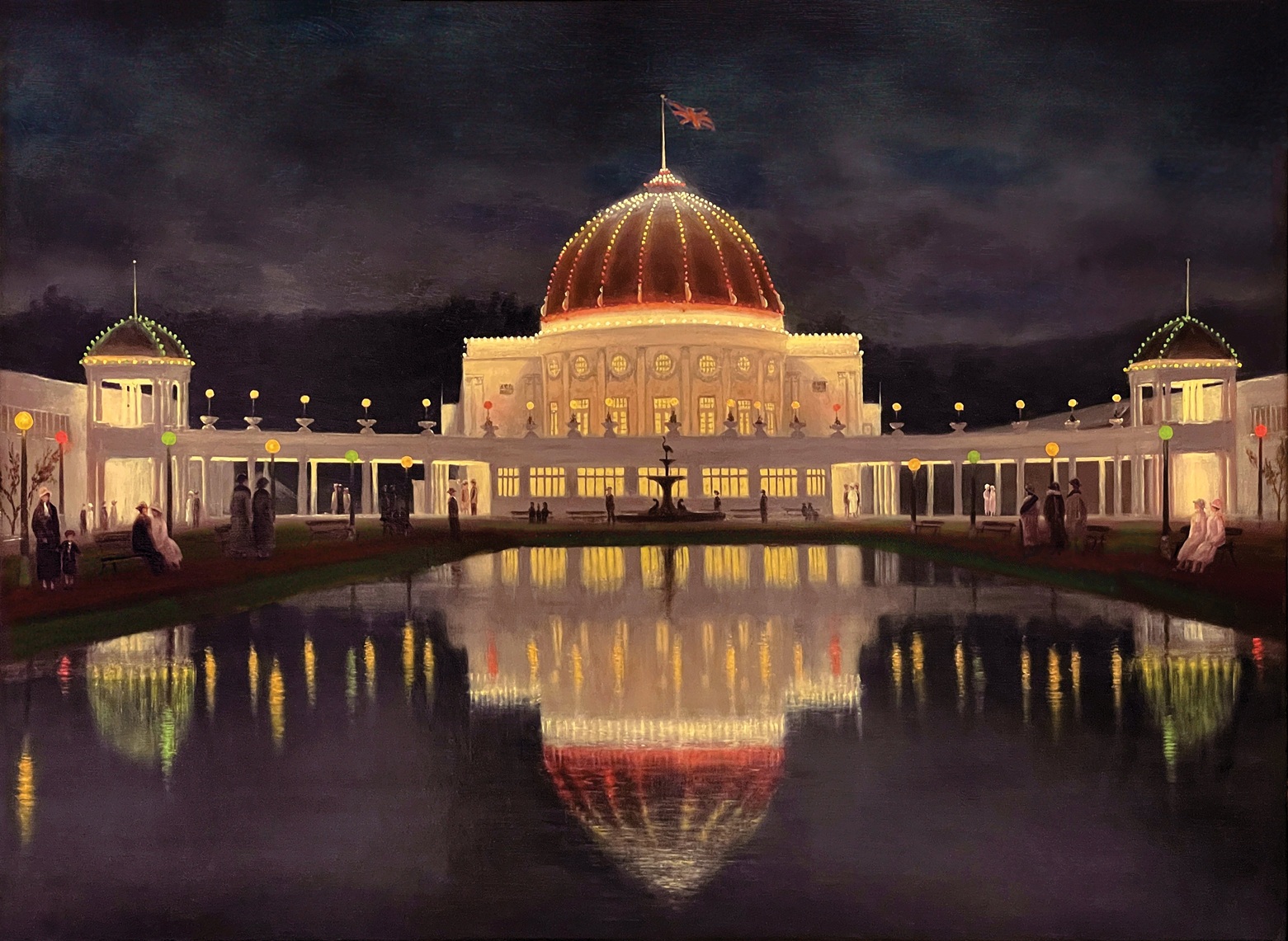

Two thousand lamps kept the dark at bay in the Amusement Zone, half of them festooning the Scenic Railway.
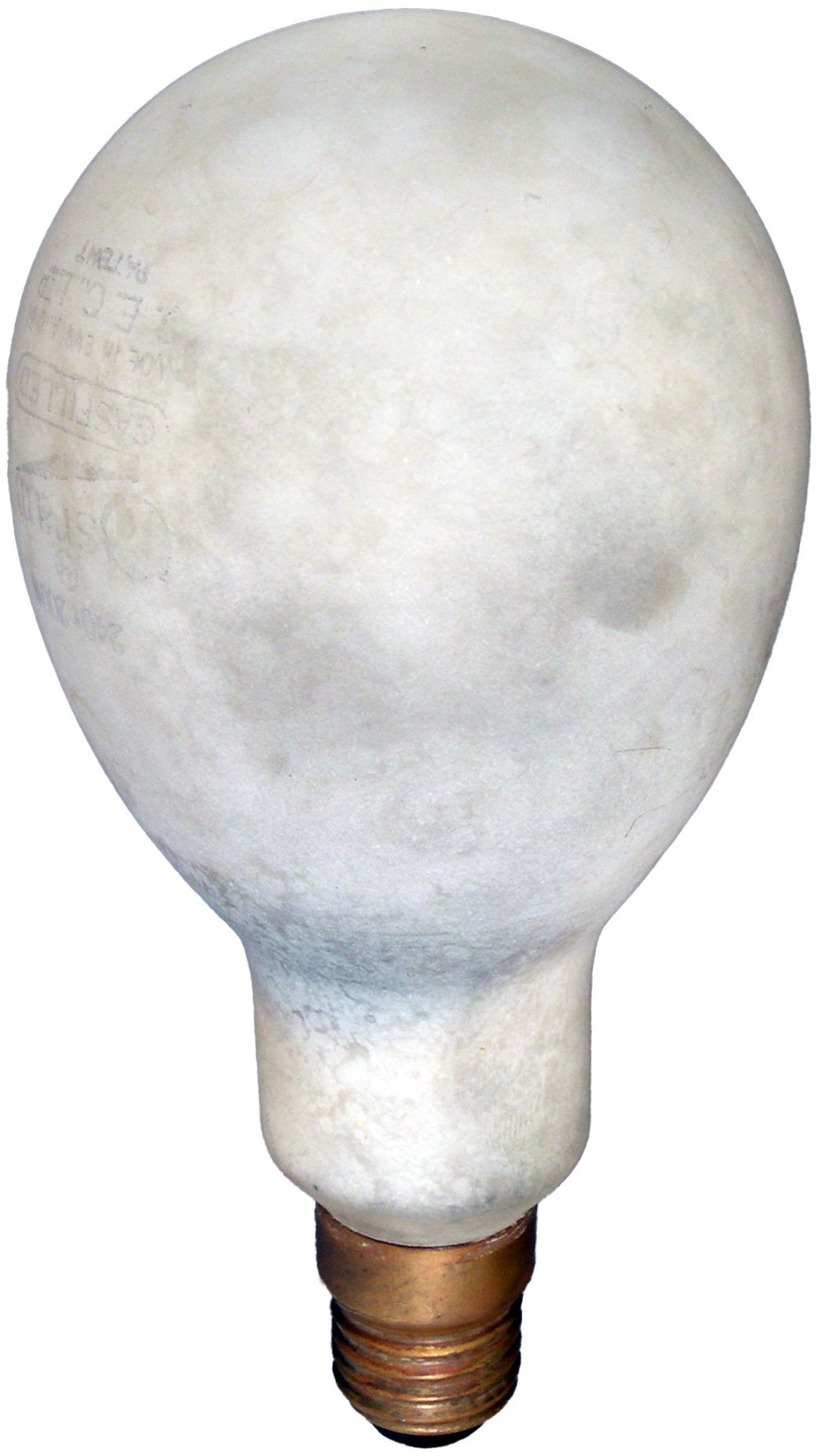
F.J. Lough, the electrical engineer in charge of all those lights, was kept especially busy in wet weather, when light globes could suddenly go "pouf", causing sections of the exhibition to disappear back into the dark of night.
The role "white coal" (electricity) played in society by the 1920s, and demonstrated at the exhibition, wasn’t just limited to lighting. In the Amusement Park electric motors pulled cars to the top of the incline on the Scenic Railway, created the current that propelled cars through the Water Caves, drove the Dodg’em cars, and powered the Merry Mix-up, the Caterpillar, the Whip, and the Fun Factory. Electricity was also used for running some of the machinery on show, such as brush-making machines, looms, and typesetting machines. Models of a coalmine, a brick works, and a dredge, and a hugely popular map of the world with ships sailing across its oceans were also brought to life by electricity. It was used to pump water in dioramas, aid in food preparation in the restaurant kitchen, and provide heating and refrigeration.

Scores of Eskimo Pies, the foil-wrapped chocolate-covered vanilla ice cream bars invented in America in 1920 and introduced to New Zealand in 1924, were also sold. These were purchased either at the dedicated Eskimo Pie Marble Bar in the No6 Pavilion or the New Zealand Government’s Kinema Theatre.
The electric nerve-centres of the exhibition were three sub-stations with a capacity of 900kW, and the power was distributed via about 70km of newly installed electrical wiring.
After five months, and one still to come, an Otago Daily Times reporter mused about how much the exhibition, that "wonderful city of light and colour", would be missed. The reflection of the thousands of lights that caused a warm glow to suffuse the north-eastern sky, along with the blaze of colour that illuminated the view of the hill folk as they looked out over north Dunedin, would suddenly be gone and one day forgotten (until some curator decided to write an article about two humble, 100-year-old light bulbs that were gifted to Toitū back in the 1960s).
Peter Read is a curator at Toitū Otago Settlers Museum



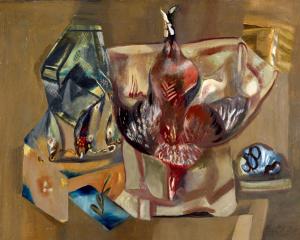
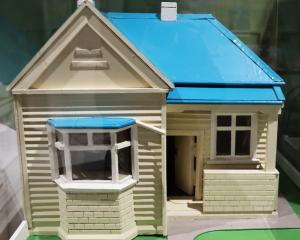

![‘‘Neil’s Dandelion Coffee’’. [1910s-1930s?]. EPH-0179-HD-A/167, EPHEMERA COLLECTION, HOCKEN...](https://www.odt.co.nz/sites/default/files/styles/odt_landscape_small_related_stories/public/slideshow/node-3436487/2025/09/neils_dandelion_coffee.jpg?itok=fL42xLQ3)



